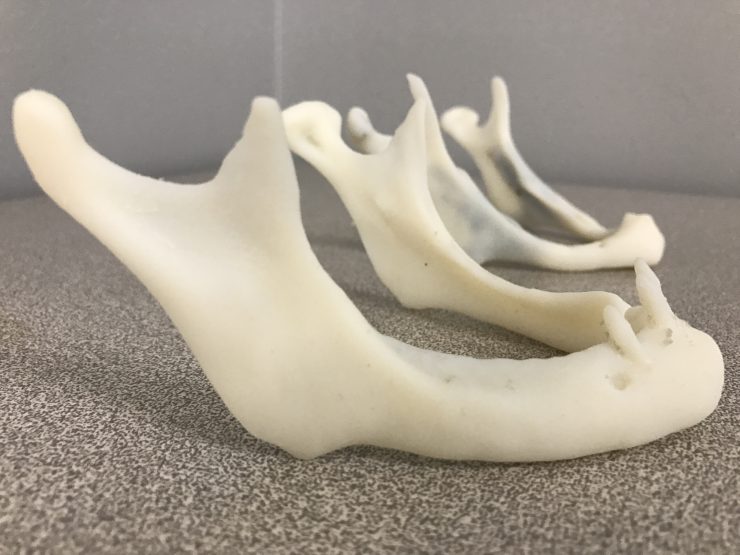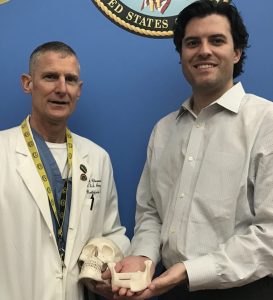When a patient’s lower jaw bone is removed due to injury or disease, it can be replaced by a mandibular implant. Unfortunately, these implants only come in a limited number of sizes – much fewer sizes than there are unique patient anatomies. This means that surgeons need to bend and shape the implant during surgery to make sure that it perfectly fits the patient’s jaw, allowing him or her to chew properly and maintain a normal appearance. But at the VA Puget Sound Health Care Center, maxillofacial surgeons James Clossman and Jeffrey Houlton are using 3D printing to create a new type of mandibular implant – one that fits the patient perfectly from the start, without need for modification during surgery.
Clossman and Houlton recently teamed up with engineers Chris Richburg and Patrick Aubin and VA Puget Sound radiologists Eric Rombokas and Beth Ripley to create exact replicas of three patients’ mandibles, using the hospital’s Stratasys 3D printer. These models allowed the surgeons to compare standard mandibular implants to the 3D printed replicas, adjusting the size and shape as needed days before the surgery, rather than scrambling to do it during the operation itself.
“3D printed modeling, along with virtual planning, has really become a game changer in difficult mandibular reconstruction cases,” said Houlton. “Being able to have a 3D printed model of the patient’s mandible allows us to precisely plan key details during these cases, with a precision you just can’t get with traditional techniques.”
The 3D printed custom mandible models translated into approximately two hours’ time savings for each surgery. With OR time estimated at about $80 a minute, that’s quite a cost saving as well – not to mention that it means less time under anesthesia for the patient, and less fatigue for the surgeons.
 VA Puget Sound is one of several VA hospitals that Stratasys equipped with 3D printers, as well as materials and training, in order to create a 3D printing hospital network. The company has been working closely with this VA network in order to help increase surgeon preparedness and quality patient care through 3D printing. VA Puget Sound is also using the technology to help surgeons identify the most appropriate heart valve size for replacement surgery, which can mean the difference between life and death. The hospital is also exploring 3D printing as a means to create personalized orthopedic implants for patients that fall at the extremes of the size range.
VA Puget Sound is one of several VA hospitals that Stratasys equipped with 3D printers, as well as materials and training, in order to create a 3D printing hospital network. The company has been working closely with this VA network in order to help increase surgeon preparedness and quality patient care through 3D printing. VA Puget Sound is also using the technology to help surgeons identify the most appropriate heart valve size for replacement surgery, which can mean the difference between life and death. The hospital is also exploring 3D printing as a means to create personalized orthopedic implants for patients that fall at the extremes of the size range.
“It is exciting to see this technology being offered to veterans through the VA system,” said Houlton. “The next step will be to use the Stratasys 3D printer to create additional tools to help with optimal fit, such as surgical cutting guides. The dream is to eventually 3D print the perfect implant with a metal 3D printer every time.”
Discuss this and other 3D printing topics at 3DPrintBoard.com or share your thoughts below.



30 Replies to “VA Hospital Uses 3D Printing to Create the Perfect Mandibular Implant”
Comments are closed.